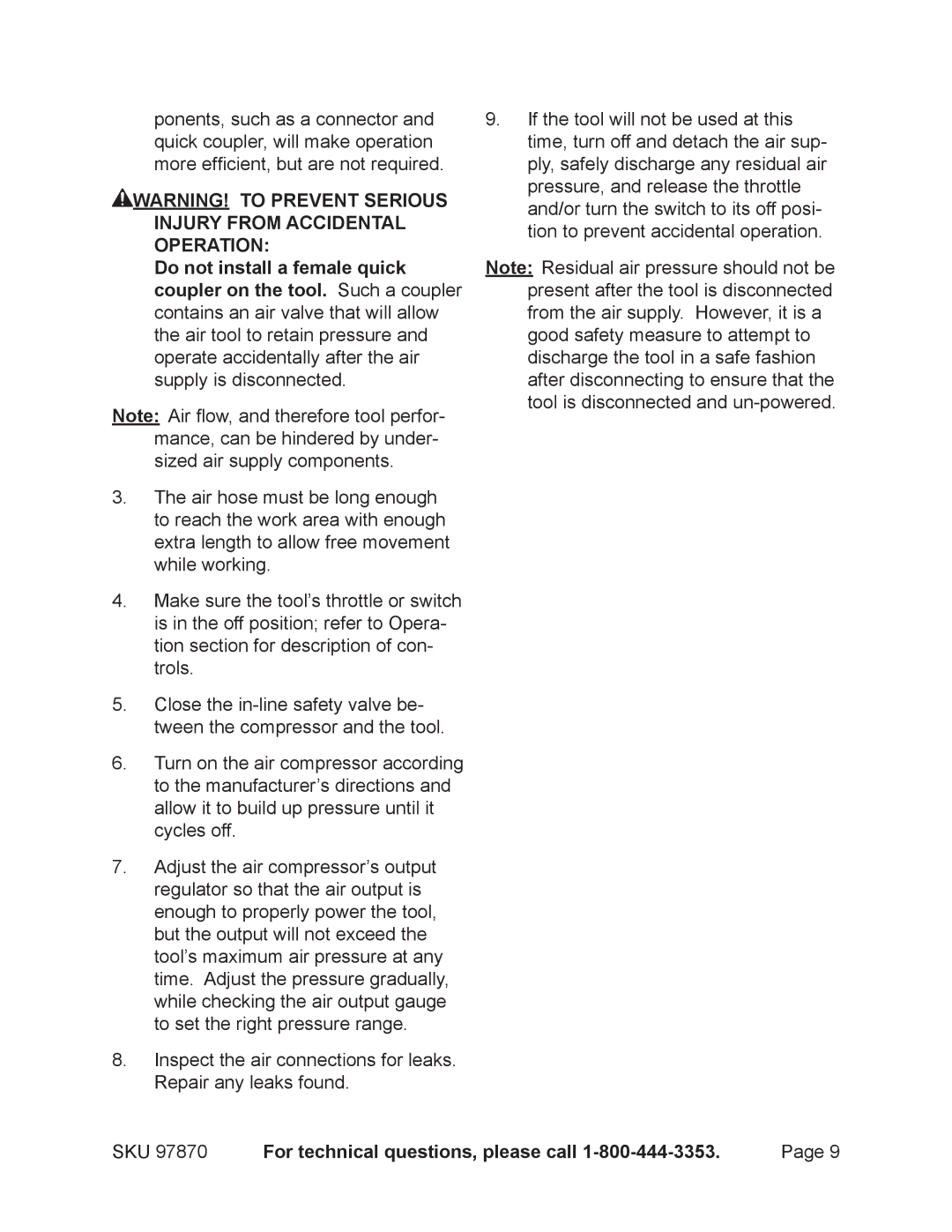ponents, such as a connector and quick coupler, will make operation more efficient, but are not required.
![]() WARNING! TO PREVENT SERIOUS
WARNING! TO PREVENT SERIOUS
INJURY FROM ACCIDENTAL OPERATION:
Do not install a female quick coupler on the tool. Such a coupler contains an air valve that will allow the air tool to retain pressure and operate accidentally after the air supply is disconnected.
Note: Air flow, and therefore tool perfor- mance, can be hindered by under- sized air supply components.
3.The air hose must be long enough to reach the work area with enough extra length to allow free movement while working.
4.Make sure the tool’s throttle or switch is in the off position; refer to Opera- tion section for description of con- trols.
5.Close the
6.Turn on the air compressor according to the manufacturer’s directions and allow it to build up pressure until it cycles off.
7.Adjust the air compressor’s output regulator so that the air output is enough to properly power the tool, but the output will not exceed the tool’s maximum air pressure at any time. Adjust the pressure gradually, while checking the air output gauge to set the right pressure range.
8.Inspect the air connections for leaks. Repair any leaks found.
9.If the tool will not be used at this time, turn off and detach the air sup- ply, safely discharge any residual air pressure, and release the throttle and/or turn the switch to its off posi- tion to prevent accidental operation.
Note: Residual air pressure should not be present after the tool is disconnected from the air supply. However, it is a good safety measure to attempt to discharge the tool in a safe fashion after disconnecting to ensure that the tool is disconnected and
SKU 97870 | For technical questions, please call | Page 9 |
